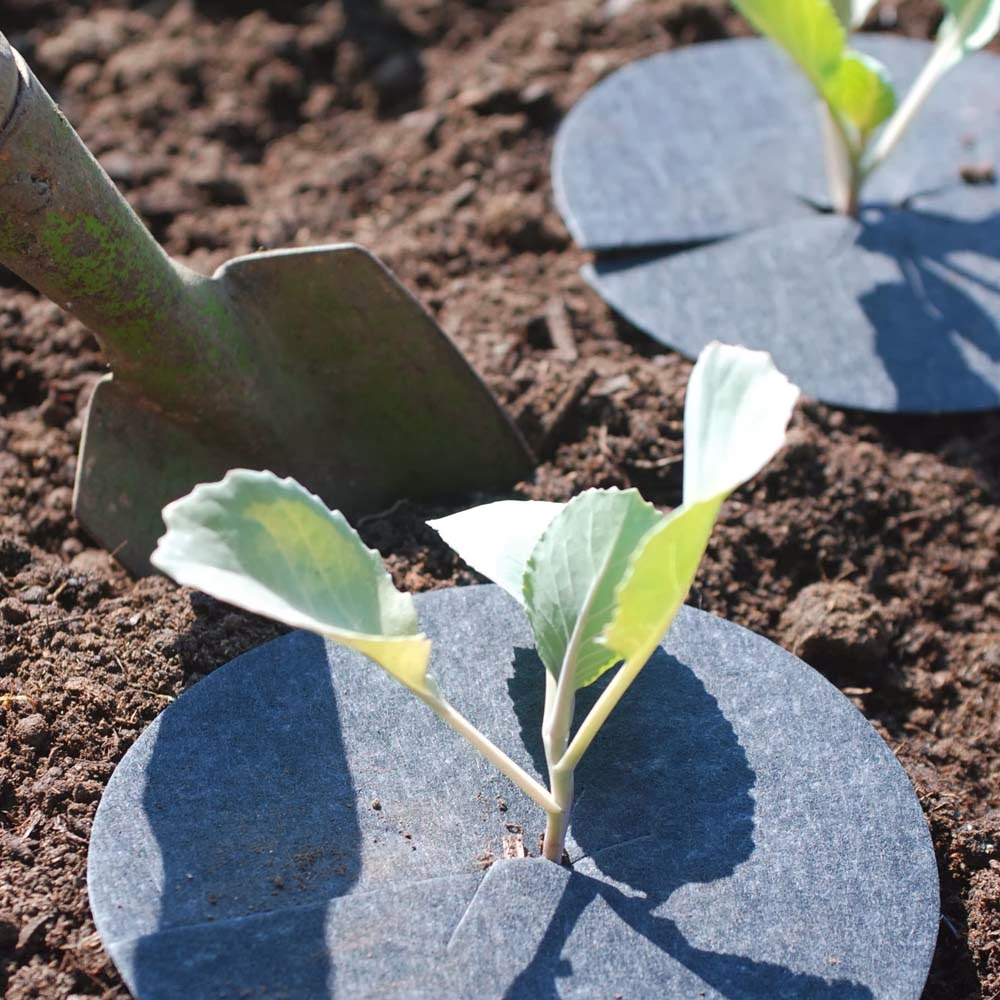The cabbage may have the reputation of being a peasant food, but it was a reputation that was both hard earned and well deserved. Domesticated from the wild field cabbage - Brassica oleracea over 2000 years ago, it became a prominent part of European cooking through the Middle Ages due of its large food reserves. However it was its ability to store well, and therefore provide a nutritious food source over the winter when little else was available, that allowed the humble cabbage to really made its mark. Without the availability of farm produces cabbages, many more of Europe's poor would have died through winter starvation over the centuries.
How to grow cabbage from seed
Of course you can purchase cabbage seedlings from your local plant retailer, but cabbage is so easy to grow from seed that it isn't really necessary. Furthermore it is considerably cheaper and you get to choose exactly which variety you want to grow.
If you are growing early cabbage then these will need to sown approximately 4 weeks before the last expected frost. This will be around mid-January or February in the south of the country and March in the north.
If you haven't already done so, dig in plenty of well-rotted farm manure into your future cabbage bed. If the ground you will be planting in has a history of clubroot disease you can still achieve some really commendable heads by saturating the planting hole with a dilution of Armillatox made to the makers recommended strength. When you are ready to plant cabbage seedlings, liberally dust the hole with lime before hand.
 Sow seeds indoors in modular or seed trays using a good quality compost such as John Innes 'Seed and Cutting'. Plant each seed 1/4 inch deep and if you are using standard seed trays 2 inches apart. Gently water and place the tray into a propagator or seal inside a clear polythene bag. Place on a warm, sunny windowsill with temperatures between 60° and 70°F.
Sow seeds indoors in modular or seed trays using a good quality compost such as John Innes 'Seed and Cutting'. Plant each seed 1/4 inch deep and if you are using standard seed trays 2 inches apart. Gently water and place the tray into a propagator or seal inside a clear polythene bag. Place on a warm, sunny windowsill with temperatures between 60° and 70°F.Once the seeds have germinated the trays can be removed from the propagator or polythene bag. They can remain on the windowsill, but keep an eye on making sure that the compost remains uniformly moist.
When the seedlings have three leaves, they will be ready to plant outdoors. However they will need to be hardened off for a week or so before hand and only if the threat of late frosts has passed.Start off by placing them in a ventilated cold frame during the day but remember to bring them back in over night.
 After a week or so when overnight temperatures begin to stabilize you can leave the seedlings out overnight in the cold frame. After another week they should be able to leave the cold frame altogether and be placed out into a sheltered area.
After a week or so when overnight temperatures begin to stabilize you can leave the seedlings out overnight in the cold frame. After another week they should be able to leave the cold frame altogether and be placed out into a sheltered area.Plant seedlings in their final position outside slightly deeper than they were in the trays. If you are planting in an area prone to cabbage root fly then place a collar around the neck of the seedling after planting.
Early cabbages cultivars will do best in a sandy loam, while later types prefer a heavier, moisture-retaining soil. All varieties will need a little afternoon shade over the summer to prevent scorching of the outer leaves.
Plant them 6 to 12 inches apart in rows 1 to 2 feet apart. Wide spacings produce bigger heads, but young, small cabbages are tastier. Side-dress the seedlings with a well-rotted farm manure or rich compost approximately 3 weeks after planting. To get the best of both worlds you can consider planting cabbage seedlings plant 6 inches apart to begin with and then harvest every other one before maturity.
Late summer cabbage cultivars can be sown directly outside in a prepared seed bed 12 to 18 inches apart in rows 2 to 3 feet apart.
 Hand pull weeds to avoid damaging cabbage's shallow roots and use a mulch to keep the soil moist. Be aware that uneven watering can cause sudden growth spurts that can cause the developing cabbage head to split. If you do see a cabbage head starting to crack, try twisting the plant a half turn and pull up to slightly dislodge the roots. Alternatively, use a spade to cut the roots in one or two places 6 inches below the stem. This will slow the plant's growth and help to prevent the cabbage from bolting.
Hand pull weeds to avoid damaging cabbage's shallow roots and use a mulch to keep the soil moist. Be aware that uneven watering can cause sudden growth spurts that can cause the developing cabbage head to split. If you do see a cabbage head starting to crack, try twisting the plant a half turn and pull up to slightly dislodge the roots. Alternatively, use a spade to cut the roots in one or two places 6 inches below the stem. This will slow the plant's growth and help to prevent the cabbage from bolting.Avoid getting the foliage wet during cool weather or periods of high humidity as this can promote the incidence of fungal disease. You can cut back on water as the cabbages matures, and if leaves start to go yellow, apply with a high nitrogen, water-soluble fertilizer.
For related articles click onto the following links:
Gardenofeadenveg

